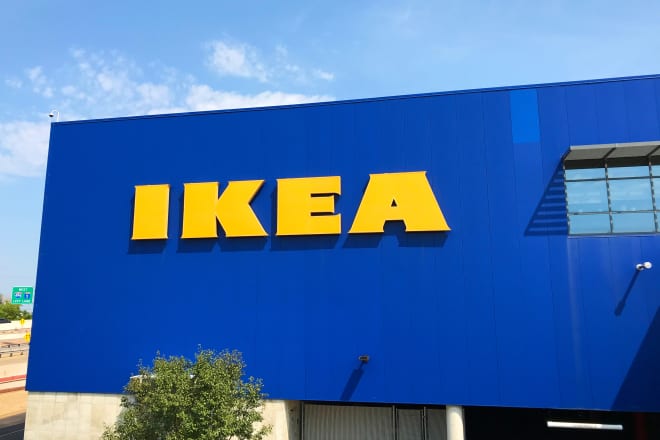Snapdragon claims 10 percent of the PC market
Qualcomm said Wednesday that it has made strong progress against its goals for Snapdragon PCs, and that its ongoing litigation with Arm had wrapped up. Specifically, according to Circana — which owns the NPD Group — Qualcomm captured more than a 10 percent share of all of the Windows laptops sold in the United States priced higher than $800, Cristiano Amon, the chief executive of Qualcomm, told investors. Though Qualcomm will have a ways to go to usurp AMD and Intel from the laptop market, it’s a good start. Amon said that more than 80 PC designs using the Snapdragon X Elite or one of its derivatives were either in production or development, and the company is targeting more than 100 designs to be commercialized through 2026. “We look forward to PCs powered by Snapdragon X from leading OEMs including Acer, ASUS, Dell, HP, and Lenovo in the coming months,” Amon said. More importantly, the Windows on Arm ecosystem continues to work hard to alleviate any concerns of compatibility, one of the sticking points for some customers as they consider moving from Windows on X86 to Windows on Arm. “The broader app ecosystem continues to expand with Snapdragon native apps now including 20 of the most popular VPNs, 50 of the most popular security and cloud storage apps, as well as new applications for creators,” Amon said, adding that an additional 50 AI applications are now optimized for Windows running natively on Snapdragon. However, Qualcomm did not specifically break out the number of PCs sold with Qualcomm chips inside. The company recorded that as part of its QCT segment, specifically the IoT portion. Qualcomm said that its IoT business recorded $1.549 billion on revenue, up 36 percent from a year ago. Overall, Qualcomm recorded profits of $3.180 billion, up 15 percent, on revenue of $11.669 billion, up 17 percent. “We’re still starting,” Amon told investors of its PC strategy. “As I said, we’ll continue to expand new markets. We like the results today. And the design traction is continuing to increase. The first wave was consumer. Now it’s being deployed towards commercial.” Arm-Qualcomm legal issues appear finished Qualcomm also indicated that its legal dispute with Arm, the company which develops the cores used in Qualcomm’s chips, was essentially over. Arm sued Qualcomm in Sept. 2022 over a licensing dispute that involved Nuvia, the company Qualcomm acquired in part to develop the Snapdragon X Elite chip. Last December Qualcomm prevailed on two of the three issues at the heart of the suit, but not the third. At CES, Arm executives said that the issue was “unresolved.” At stake was the ability for Qualcomm to develop its own CPUs that were compatible with Arm’s instruction system, which now apparently is not at issue. “The jury’s verdict vindicated Qualcomm’s CPU innovations and affirmed that Qualcomm’s contract with Arm provides a license for Qualcomm’s products containing our proprietary Oryon CPUs in industries such as smartphones, automotive, next generation PCs, IoT, and data center,” Amon said during the call,” transcribed by Seeking Alpha. “In addition, ARM recently notified us that it was withdrawing its October 22nd, 2024 notice of breach and indicated that it has no current plan to terminate the Qualcomm architecture license agreement. We’re excited to continue to develop performance leading, world-class products that benefit consumers worldwide that include our incredible Oryon custom CPUs.”

Qualcomm said Wednesday that it has made strong progress against its goals for Snapdragon PCs, and that its ongoing litigation with Arm had wrapped up.
Specifically, according to Circana — which owns the NPD Group — Qualcomm captured more than a 10 percent share of all of the Windows laptops sold in the United States priced higher than $800, Cristiano Amon, the chief executive of Qualcomm, told investors.
Though Qualcomm will have a ways to go to usurp AMD and Intel from the laptop market, it’s a good start. Amon said that more than 80 PC designs using the Snapdragon X Elite or one of its derivatives were either in production or development, and the company is targeting more than 100 designs to be commercialized through 2026.
“We look forward to PCs powered by Snapdragon X from leading OEMs including Acer, ASUS, Dell, HP, and Lenovo in the coming months,” Amon said.
More importantly, the Windows on Arm ecosystem continues to work hard to alleviate any concerns of compatibility, one of the sticking points for some customers as they consider moving from Windows on X86 to Windows on Arm.
“The broader app ecosystem continues to expand with Snapdragon native apps now including 20 of the most popular VPNs, 50 of the most popular security and cloud storage apps, as well as new applications for creators,” Amon said, adding that an additional 50 AI applications are now optimized for Windows running natively on Snapdragon.
However, Qualcomm did not specifically break out the number of PCs sold with Qualcomm chips inside. The company recorded that as part of its QCT segment, specifically the IoT portion. Qualcomm said that its IoT business recorded $1.549 billion on revenue, up 36 percent from a year ago. Overall, Qualcomm recorded profits of $3.180 billion, up 15 percent, on revenue of $11.669 billion, up 17 percent.
“We’re still starting,” Amon told investors of its PC strategy. “As I said, we’ll continue to expand new markets. We like the results today. And the design traction is continuing to increase. The first wave was consumer. Now it’s being deployed towards commercial.”
Arm-Qualcomm legal issues appear finished
Qualcomm also indicated that its legal dispute with Arm, the company which develops the cores used in Qualcomm’s chips, was essentially over.
Arm sued Qualcomm in Sept. 2022 over a licensing dispute that involved Nuvia, the company Qualcomm acquired in part to develop the Snapdragon X Elite chip. Last December Qualcomm prevailed on two of the three issues at the heart of the suit, but not the third. At CES, Arm executives said that the issue was “unresolved.”
At stake was the ability for Qualcomm to develop its own CPUs that were compatible with Arm’s instruction system, which now apparently is not at issue.
“The jury’s verdict vindicated Qualcomm’s CPU innovations and affirmed that Qualcomm’s contract with Arm provides a license for Qualcomm’s products containing our proprietary Oryon CPUs in industries such as smartphones, automotive, next generation PCs, IoT, and data center,” Amon said during the call,” transcribed by Seeking Alpha. “In addition, ARM recently notified us that it was withdrawing its October 22nd, 2024 notice of breach and indicated that it has no current plan to terminate the Qualcomm architecture license agreement. We’re excited to continue to develop performance leading, world-class products that benefit consumers worldwide that include our incredible Oryon custom CPUs.”





































































